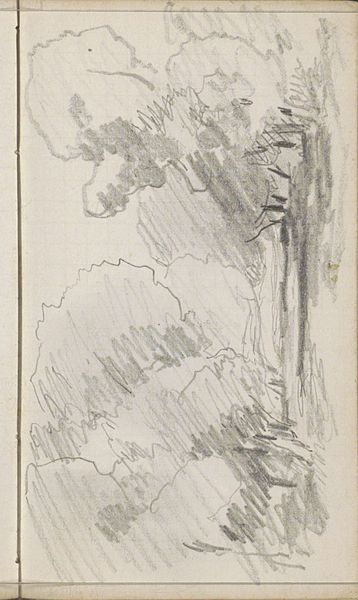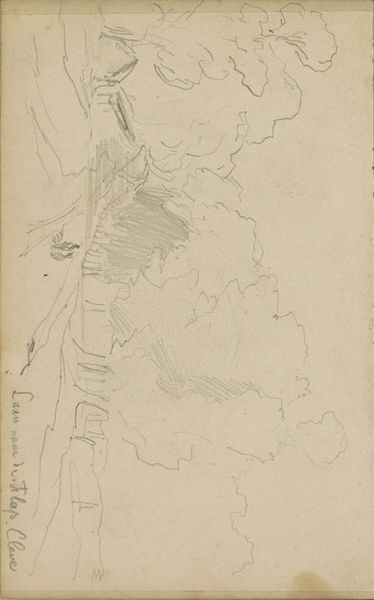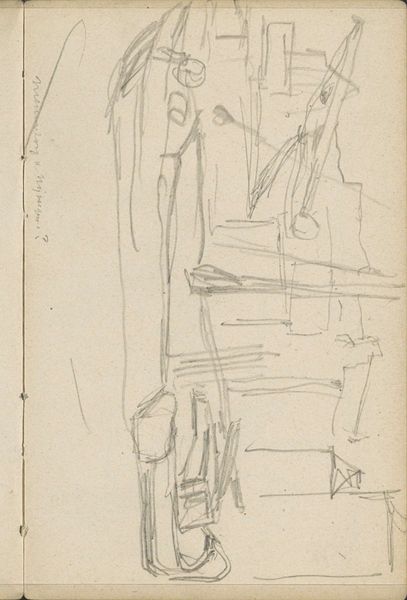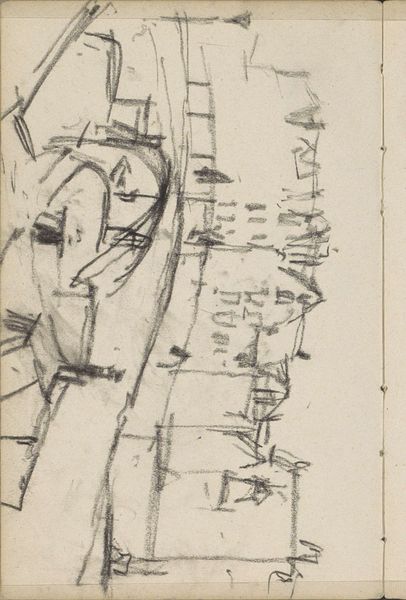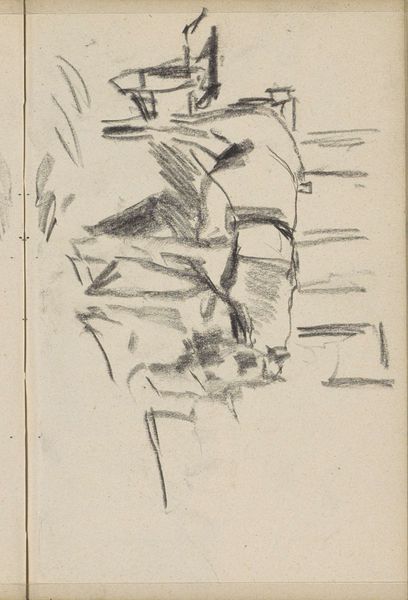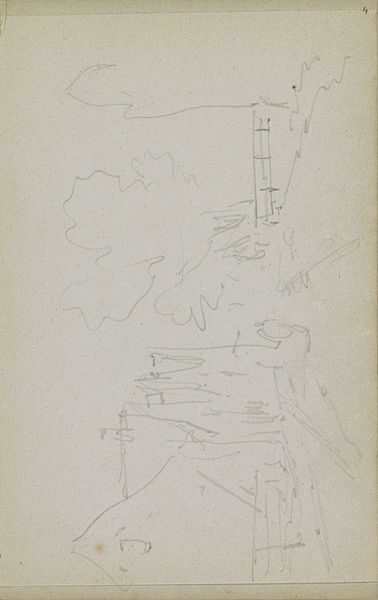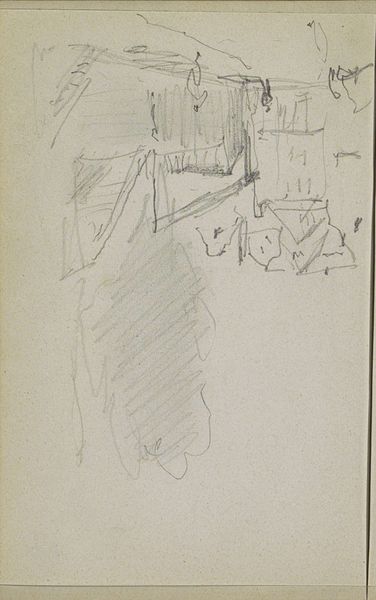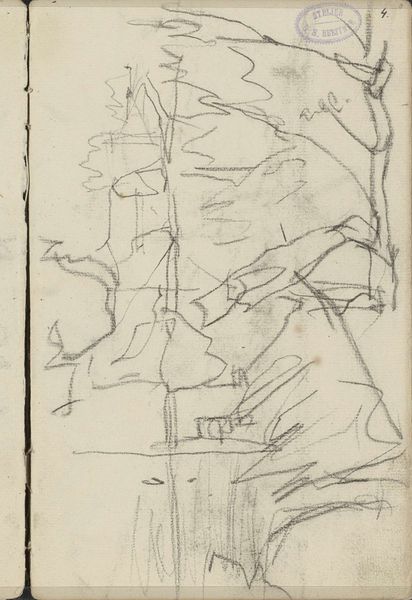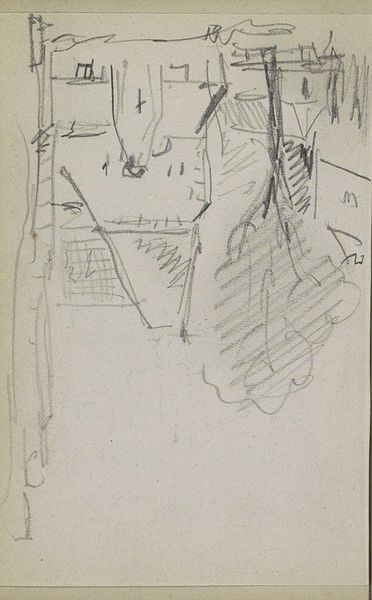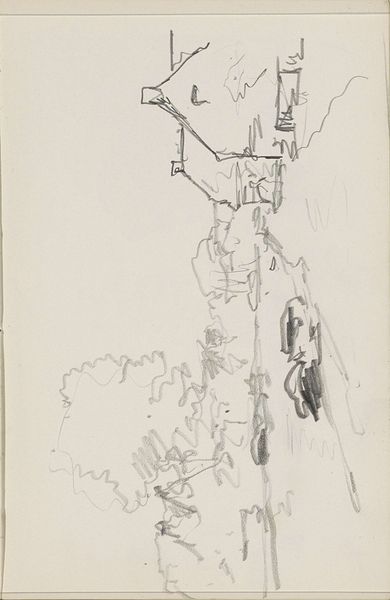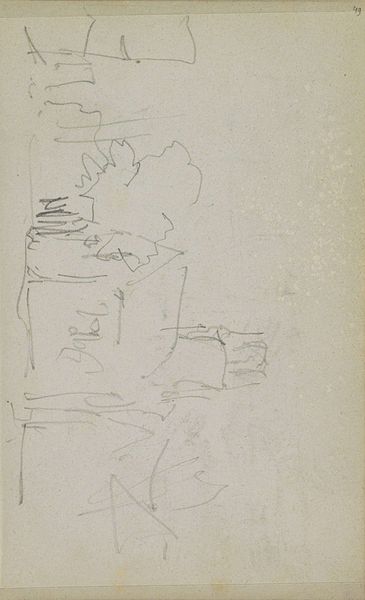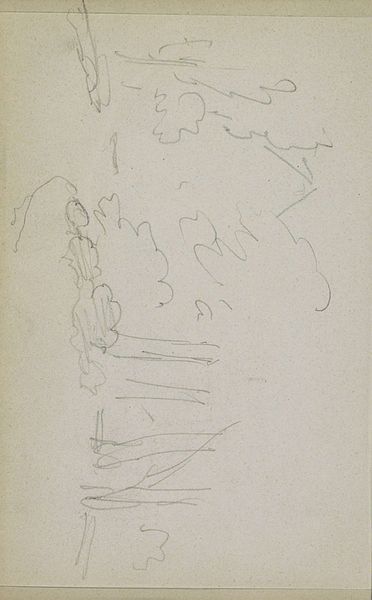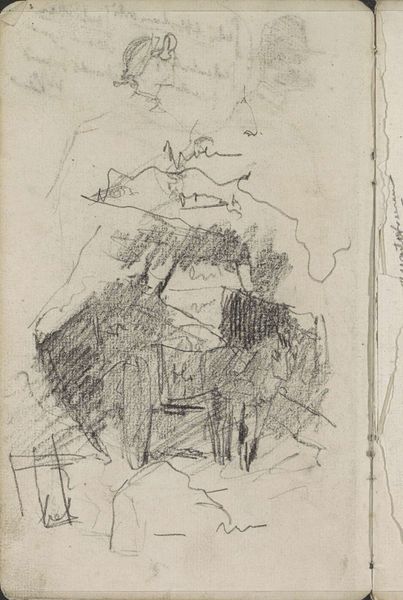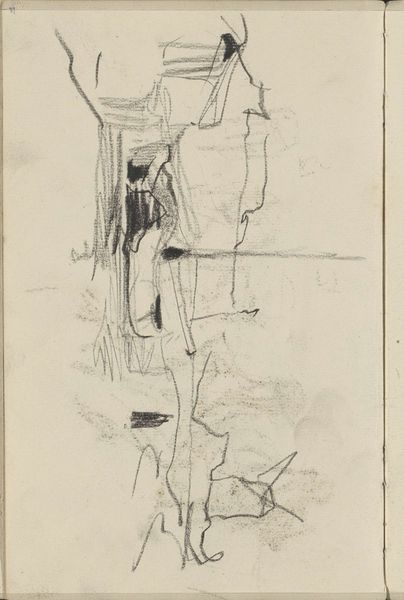
drawing, pencil
#
drawing
#
imaginative character sketch
#
light pencil work
#
pen sketch
#
landscape
#
personal sketchbook
#
road
#
idea generation sketch
#
ink drawing experimentation
#
pen-ink sketch
#
pencil
#
sketchbook drawing
#
sketchbook art
#
realism
#
initial sketch
Copyright: Rijks Museum: Open Domain
Curator: This quick sketch, "Dorp bij Kleef", roughly translates to "Village near Kleef." It’s by Johannes Tavenraat, and we think he made it somewhere between 1839 and 1872. Look closely—it’s done in both pencil and pen. Editor: Well, my first impression is one of wistful quietude. The light pencil work makes it feel unfinished, like a memory fading at the edges. It’s very personal, intimate somehow. Almost like a half-remembered dream. Curator: It does feel intimate, doesn’t it? It's that "personal sketchbook" vibe, which gives it that sense. Tavenraat probably wasn’t intending this for public consumption, more as a study or perhaps idea generation for a larger, more polished piece. It reflects the nineteenth century's fascination with realism and the artist’s direct observation of nature. Editor: Exactly! And to think about that moment, him outside sketching… was it a passing moment of inspiration? Or a pre-planned day? How much context is actually missing here. Maybe he felt melancholy, happy… we just don’t know and perhaps that is the beauty. It really does speak to the imaginative character sketch aspect as well! The light really is enchanting. Curator: His interest probably reflects that growth of infrastructure that accompanied rapid urban development. The Rijksmuseum holds a lot of his sketches and detailed preparatory work. This one is an outlier, in a sense. There’s such little documentation or publicly shared history. Editor: I like that all that history makes me want to dream up what I think might’ve been. Who were these villagers, did they know this moment was captured? Curator: It’s a reminder that the history of art is also a social history, isn't it? What survives in museum collections tells us about who and what institutions have valued, preserved, and presented to the public and it's an excellent insight! Editor: Absolutely. Thinking about the role of art itself! It can bring together the world for sure. Well, it's an artwork that certainly sparks a narrative. Curator: It does! Makes you reflect.
Comments
No comments
Be the first to comment and join the conversation on the ultimate creative platform.
